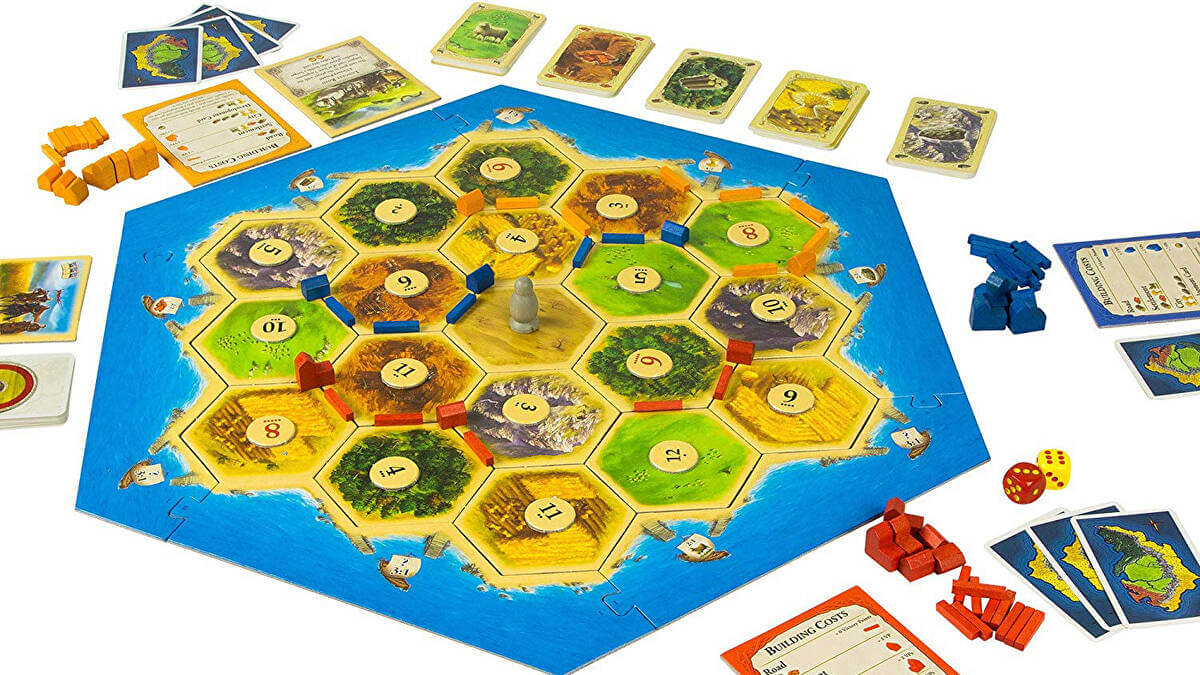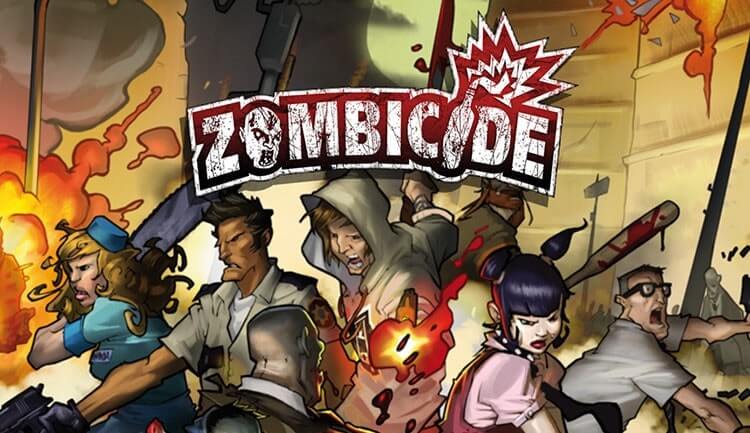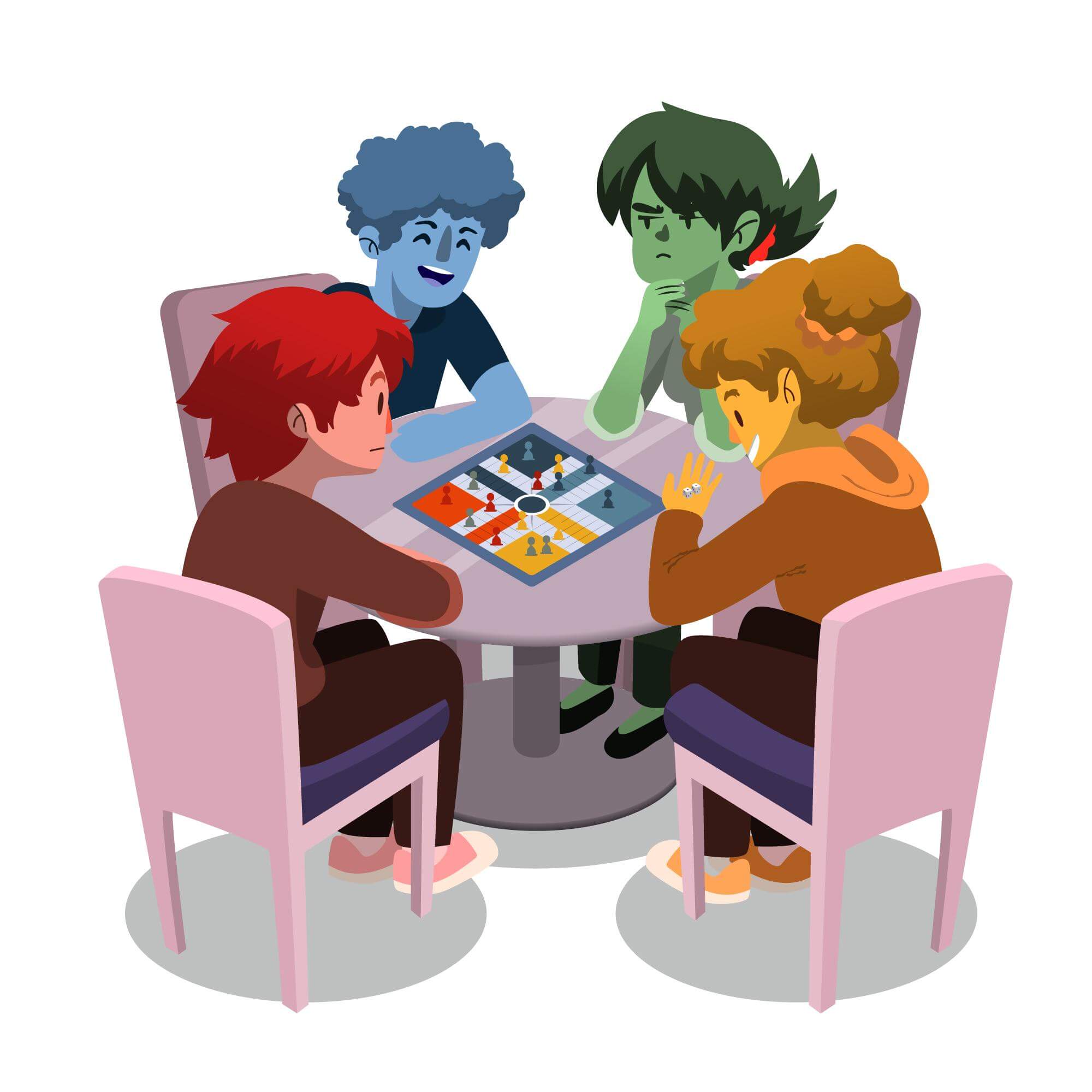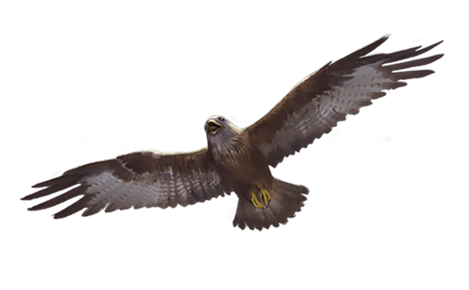Catan, also known as Settlers of Catan, is one of the most popular board games of the industry that came out in 1995 and has many fans around the world and even tournaments and leagues. It’s a game that anyone who enters the world of board game knows by heart, whether they like it or not.
If you haven’t heard of Catan yet, it is a game for three or four players and is set on an island with different terrains and different resources; wood, stone, clay, wheat, and sheep. Players gain victory points by building roads, settlements, and cities in these terrains, which also gives them resources.
Every player begins their turn by rolling two dice and the result determines two terrain tiles, and whoever has built a settlement or city adjacent to those tiles gets resources. So anyone could get resources on any turn.
Catan mainly resolves around negotiation and trading. Because sometimes we aren’t lucky with the dice, and trading with the game’s bank is more expensive, players are able to exchange resources however they like. Whoever has the most luck, makes the best deals, and builds in the best way wins the game by gaining ten victory points.
Now that we all know about Catan, here’s a list of some board games that are similar to Catan in a way;
1. Chinatown
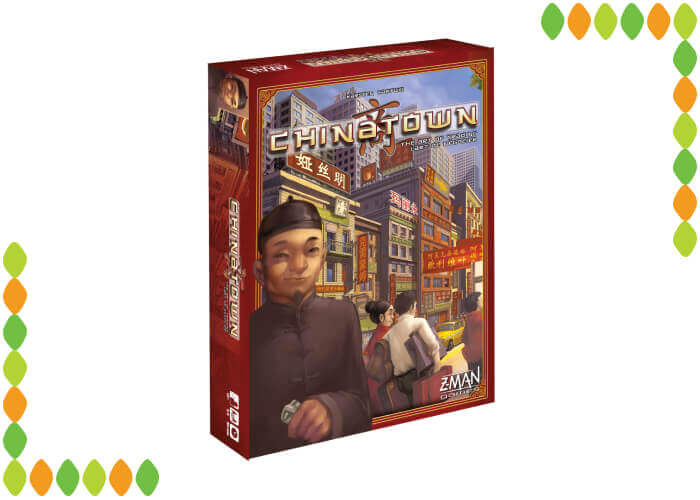
Chinatown is the most similar game to Catan in this list. It’s a game where players take the roles of Chinese investors in New York, buying land and building businesses. The game is played over six rounds or six “years” with players collecting rent from their businesses at the end of each year. The winner is the player with the most money at the end of the sixth year.
Chinatown is extremely similar to Catan because players can trade with each other and build their empire. Players don’t trade resources though, they trade land and business tiles, so they can expand one business in more than one square.
Chinatown relies less on luck because it doesn’t have dice, but the lands are still randomly distributed. Also, players don’t directly gain points from their businesses, rather they gain money from them which they have to spend in their trades with other players. That’s why there are a number of ways to win Chinatown, and you can’t surely predict the winner until the end of the game.
2. Bohnanza
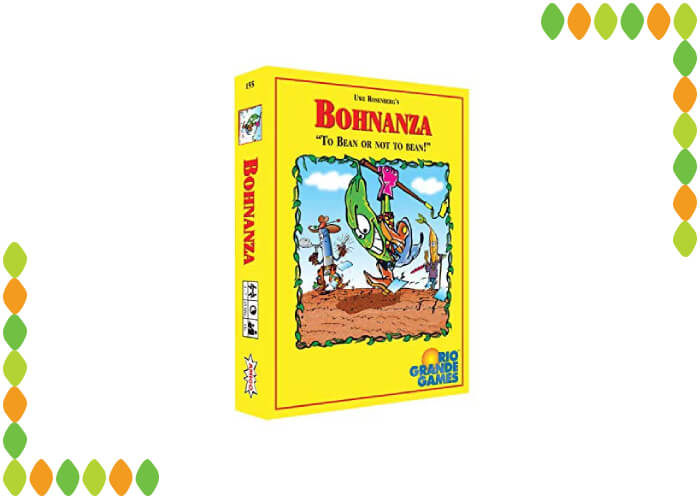
Bohnanza is also very similar to Catan, because they both mainly involve trading. In Bohnanza, players are farmers – bean farmers, and must plant and grow different types of beans to harvest them and gain coins. The player with the most coins at the end of the game wins.
Bohnanza can be played with two to seven players and is played with a deck of cards that feature different types of beans. Each player is dealt a hand of cards and must plant one or two beans at the beginning of each turn. To grow your beans more and get more coins from them, you have to collect more beans of the same type.
And that’s where the trading comes in. Each turn a player reveals two cards from the deck and can either plant them themselves, or trade them with other players. There is no building in the game, but the trading of cards will remind you of Catan.
3. Stone Age
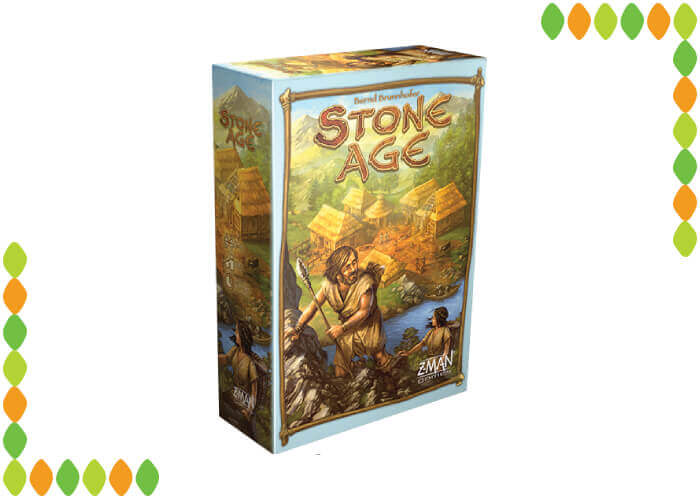
Stone Age is a classic worker-placement game for two to four players. In it, players take the role of tribes in the stone age and compete with each other over victory points by collecting resources and building huts.
There isn’t really any building in Stone Age, there isn’t even any trading. The reason it’s on this list, is because the resources are collected by rolling dice. Each resource has a number assigned to it; 2 for food, 3 for wood, 4 for clay, 5 for stone, and 6 for gold. When placing workers, players can assign any number of workers to collect resources and roll the same number of dice as workers.
Let’s say you place 3 workers to collect wood. You then roll 3 dice and add the numbers. Let’s say you got 10 in total. Then you divide the total by the number corresponding to the resource, in this example for wood, it’s 3. That gives you 3 wood tokens. And that’s how the resource collection works.
Even though it seems too much based on luck, know that players can raise their chances by using more workers and tools to manipulate their dice. Stone Age is a game for gamers who want to play a strategy game, with a hint of luck for the excitement.
4. Concordia
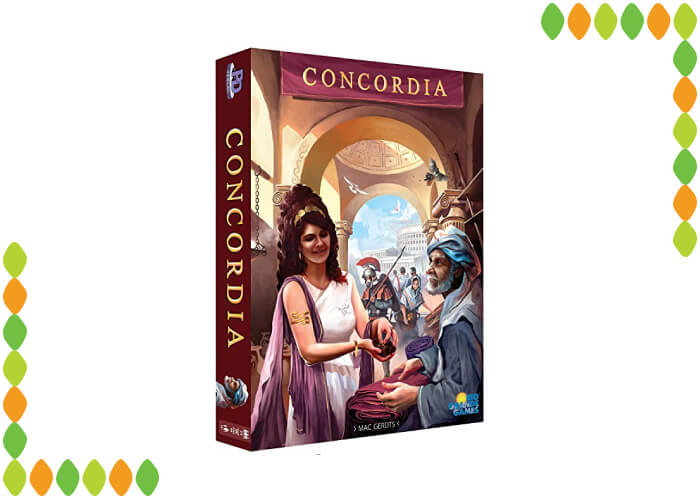
Concordia doesn’t have trading either. But its building and network mechanisms make it very similar to Catan.
Concordia is set in the Roman empire and the goal is to build the best empire by collecting resources, constructing buildings, and establishing trade routes. The game is played on a board that is divided into several provinces. Each province provides a different type of resource.
Concordia is similar to Catan because in both games players collect more resources by constructing more buildings. In Catan, players build more so they have higher chances of producing resources with the dice. But in Concordia, there are no dice. Players have a hand of cards and produce resources by playing these cards, and the more buildings they have, the more resources are produced.
Also, players must try to expand their empire in more areas to gain more victory points, as well as resources. Everything in the game is connected; cards produce points and resources which are used to construct buildings, which in turn, provide more resources and points.
5. Lords of Vegas
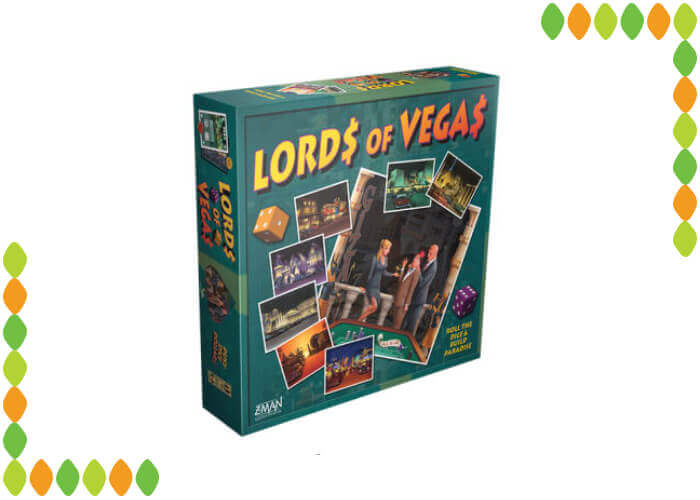
Lords of Vegas is a game of gambling and casino building for two to four players. The game is played on a board with a small part of Las Vegas; a few buildings and alleys around Las Vegas boulevard. Players collect these buildings and build luxurious casinos in them.
These casinos vary in value and color, so players must think carefully before building their casinos. Lords of Vegas is more similar to Chinatown than Catan, because players trade and sell building plots to each other and build in them. But the element of trading is surely there.
Other than trading and building casinos to earn points and money, players can also visit each other’s casinos and gamble with them. The gambling is done by determining a bet and rolling two dice, and if the result is one of the numbers shown on the betting chart, the player wins and collects money from the casino owner. Otherwise, they must pay the owner. This adds the thrilling element of luck to the game and makes it an exciting one worth playing a few times.
6. Brass: Birmingham
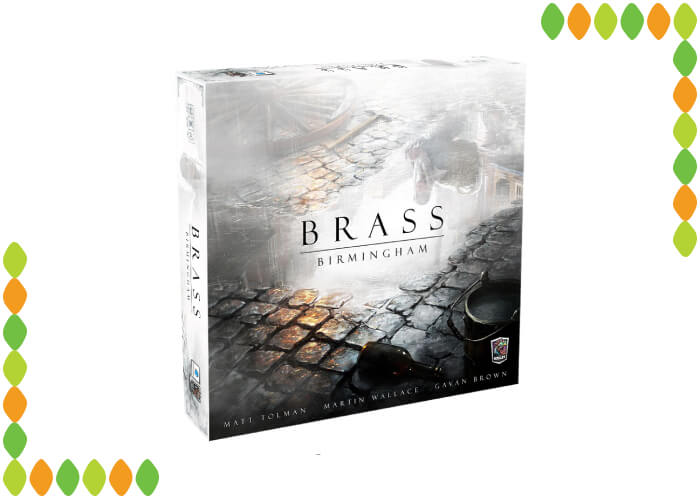
Brass: Birmingham is a heavy strategy board game for two to four players. It is set in the city of Birmingham, UK after the industrial revolution, and players are wealthy investors competing to establish the biggest industrial empire.
In Brass, players must collect and spend money, beer, coal, and iron in order to build business tiles, sell them, and collect their benefits. But in order to do that, players must build an efficient network that connects the resources, the tiles, and the markets altogether. This is the main challenge of Brass, in my opinion.
The interesting part about building networks in Brass is that you can use the links and resources produced by other players. This means whether you like it or not, everyone’s strategies are going to be tangled with each other. This is what makes the game so amusing and similar to Catan.
7. Carcassonne

Carcassonne is an easy and fun tile-based game for two to five players. If you like how Catan is so easy to learn and fast-paced and fun, as well as the building concept, I recommend you give Carcassonne a try.
In Carcassonne, each player gets a number of workers and the tiles form a deck. Each turn a player randomly draws a tile and must add it to the table to expand the land. Each tile has different terrains and icons on it; it is up to the player to place it however they like. After placing a tile, players can choose to place a worker on the tile. Depending on where the worker is placed, it is going to be stuck for a while, before being released and granting points.
Carcassonne is like Catan because of how the land is developed. Players try to expand their own territories and gain new ones while blocking off other players and trying to steal their points. Also, Carcassonne is even easier to learn than Catan and takes less time to play with fewer components, and just as much conflict and fun.
Final Thoughts
While Catan is a great game that can be played numerous times, there are a lot of games that you can enjoy as much as Catan. If you are a fan of the game, I’m sure that you’ll enjoy playing all of the games on this list. What other board games have you played that reminded you of Catan? Let us know in the comments.

